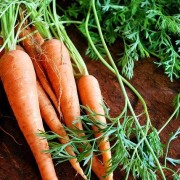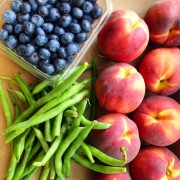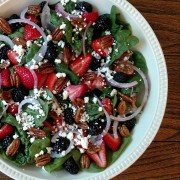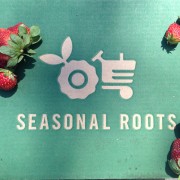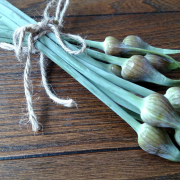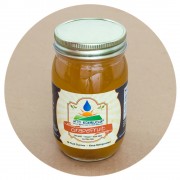Root to Stem, Root to Stalk: Getting the Most Out of Your Produce
Are you getting the most out of your produce each week? Did you know that the leaves, greens, stems, and stalks of many of the vegetables that we tend to throw away are edible and often contain even more beneficial nutrients than their other, more popular, half? Before you toss out the beet greens, carrot tops, and broccoli stalks from this week’s Seasonal Roots basket, consider using these culinary castaways to add texture, interest, and flavor to your next meal.
Here are a few suggestions from One Green Planet to help get you started:
- Blanch Away the Bitterness – Although you can eat green tops raw, some people might find them a bit bitter. Blanching is a useful technique to help remove any bitter taste. To blanch the greens, bring a large pot of water to a rapid boil and drop the greens in. Stir them around a bit. In just a few minutes, the greens will start to soften and become a beautiful, bright color. You don’t want to cook them too long or they will lose that color and get mushy. Then transfer the greens to an ice bath to shock them. This will stop the cooking process and help them keep that beautiful, bright color. If you don’t want to set up an ice bath, at least transfer the greens to a colander and run cold water over them for a minute. When they are cool enough to handle, drain any excess water and continue with your recipe.
- Make Pesto – While pesto is traditionally made with basil, I often make ours using kale, spinach, or any other greens that I happen to have on hand. This Beet Greens Pesto is a simple way to make use of those leftover greens: In a food processor, combine 4 cups of beet greens (remove the stems), 4 cracked garlic cloves, ½ cup walnuts, 3 Tbs. grated parmesan, ½ tsp. kosher salt and ¼ tsp. black pepper. Process the ingredients while drizzling in up to ½ cup extra-virgin olive oil until you reach the desired consistency. Store the pesto in an airtight container in the refrigerator.
- Make Vegetable Stock – Vegetable stock is a great way to use up any leftover vegetables and their green parts, and it eliminates the fear of bitterness or overcooking. Just add green tops or stalks to into your pot with whatever vegetables, herbs and spices you are using to make your stock and follow your stock recipe directions.
- Make Smoothies – Smoothies are a great way to use vegetable greens. Try starting off by just adding in a small amount of greens and gradually add in more as your taste adjust. If you are new to smoothies, try adding carrot or beet greens to this Beginner Green Smoothie* to get you headed in the right direction. * Place the following ingredients into a blender and blend until smooth: ½ cup green grapes, ½ apple (peeled and cut up), 1 banana, 2 cups baby spinach, ½ cup green tea, 1 slice of ginger, ½ cup ice cube.
- Sauté the Greens – Sautéed greens are an easy and delicious way to put those leftover green tops to use! I love greens sautéed in a pan with olive oil, garlic, shallots and a pinch of red pepper flakes, cooked just long enough to wilt and turn crisp-tender.
Sarah Young is a wife, mother of three, Certified Health Education Specialist, and healthy living advocate. She has a background in Dietetics and a B.S. in Health, Fitness, and Recreational Resources with a concentration in Health Promotion. She is also a writer for several local and online publications, an ambassador for the Jamie Oliver Food Foundation, and a health contributor for ABC 7 News/WJLA. In her spare time, she enjoys running, hiking, gardening, and spending time with her family and their dog, Maple.
